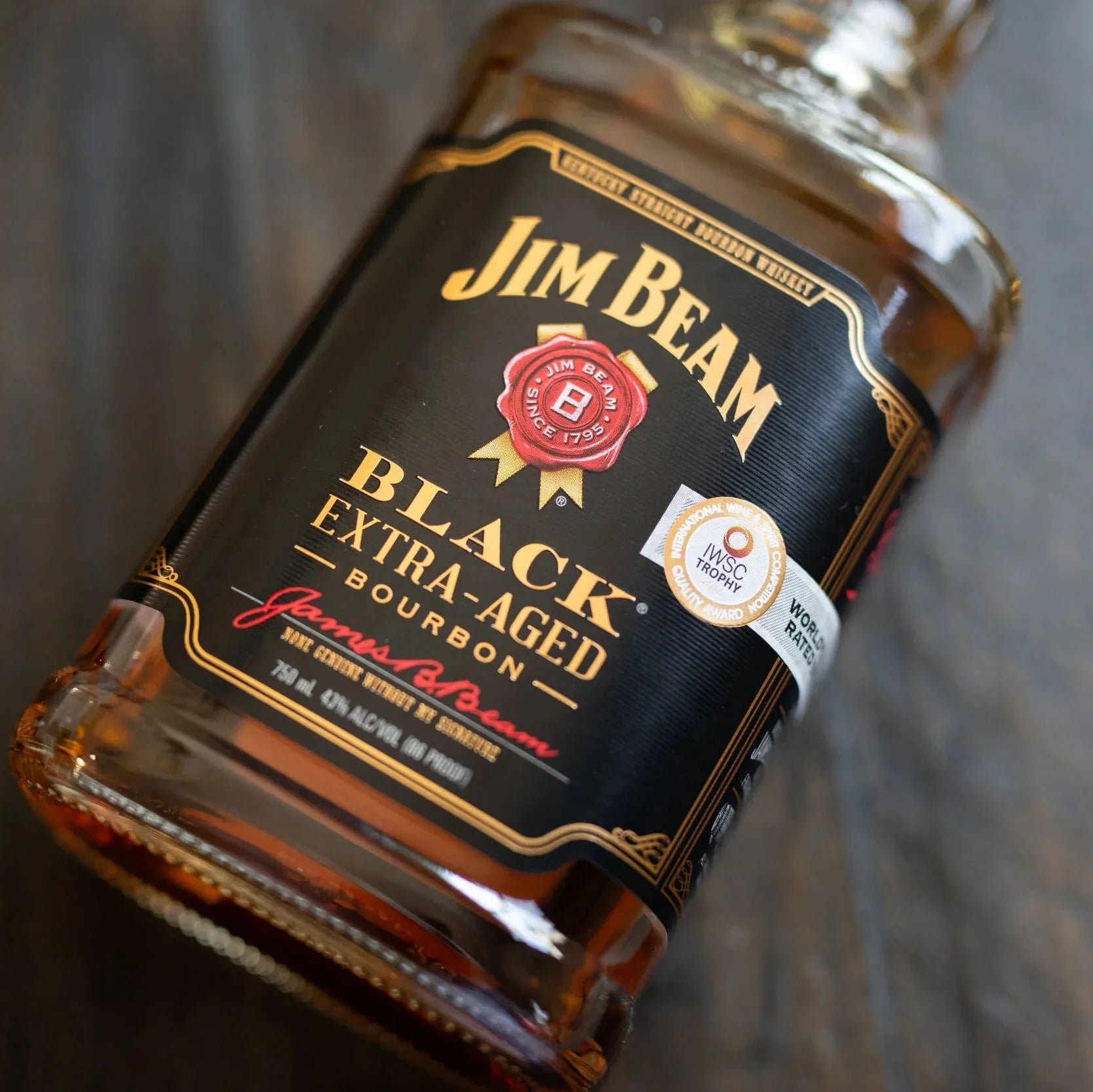Nestled in the heart of Kentucky, Maker's Mark is more than just a bourbon; it's a celebration of craftsmanship and heritage. With its iconic red wax seal and rich history, each bottle tells a story shaped by generations of passionate artisans. As we delve into the intricate process behind Maker's Mark, we uncover the secrets that make this whiskey so uniquely flavorful. From the hand-selected grains to the meticulous distillation and aging processes, every step is infused with an unwavering commitment to quality. Join us on a journey through the distillery, where tradition meets innovation, and discover what truly sets Maker's Mark apart in the world of bourbon. Whether you’re a seasoned connoisseur or just starting your whiskey adventure, the layers of flavor and craftsmanship await to be unlocked. Get ready to savor every sip and appreciate the artistry behind each handcrafted bottle.
Let’s start with something important: Maker’s Mark is not an accident.
It’s not a “whatever’s on the shelf” bourbon, even though it’s on almost every shelf. It’s the product of a very intentional recipe, very intentional aging, and a very intentional point of view on what bourbon should taste like.
And that’s the real story — why Maker’s Mark feels familiar, approachable, smooth, and still, somehow, worthy of respect.
The Wheated Difference
Most bourbons use a mash bill that leans on corn, rye, and malted barley. Maker’s Mark famously doesn’t use rye. Instead, it uses red winter wheat in place of rye.
Why does that matter?
Rye grain brings pepper, sharp spice, and heat. Wheat brings softness, roundness, and warmth.
That’s why Maker’s Mark is known for its mellow profile. It leans more into vanilla, caramel, honey, and gentle baking spice instead of big pepper or heavy bite. It’s friendly. It’s pourable. It’s the bourbon people drink neat even if they “don’t usually drink bourbon neat.”
That wheated mash bill is also why Maker’s Mark often gets compared to some extremely sought-after bottles in the wheated bourbon world. The difference is that Maker’s Mark is actually attainable.
Flavor: What You Actually Taste
If you sit with a glass of Maker’s Mark, here’s what you’ll usually pick up:
-
Nose: Vanilla, caramel, sweet oak, a touch of orange peel, a little cinnamon.
-
Palate: Soft caramel, toffee, honeyed corn, toasted wood, warm baking spice.
-
Finish: Smooth and lingering, with sweet oak and a faint maple note.
There’s no harsh hit. No ethanol blast. Nothing that makes you wince. It’s structured, yes — but it’s inviting.
This is one big reason Maker’s Mark is often someone’s “first real bourbon.” It’s not overwhelming. It’s not thin. It’s comfortable.
But here’s the trick: that gentle profile doesn’t mean it’s simple.
Under that vanilla-and-toffee surface, there’s depth. Let the glass sit for a few minutes and come back. You’ll start getting more warm oak, more toasted sugar, more of that subtle wheat sweetness that makes the sip feel almost creamy.
That’s not an accident either.
Aging and the Barrel Work
Maker’s Mark is not rushed to market. The brand doesn’t put an age statement on the standard expression, because instead of aging to a specific year, they pull barrels when the bourbon tastes right.
That “taste when it’s ready” approach means they’re actively managing maturity, not just time.
The barrels themselves also matter. Maker’s Mark uses charred American oak, of course, but the team is extremely hands-on with barrel rotation. Barrels don’t just sit in one place, forgotten. They’re moved to help ensure even exposure to Kentucky’s temperature swings. That’s a nerdy detail, but here’s why it matters to you: better exposure means better flavor extraction. Better flavor extraction means more vanilla, caramel, toasted oak, and that signature round sweetness.
In other words, the way Maker’s Mark tastes is physical. It comes from wood, heat, patience, and deliberate handling.
The Red Wax: Yes, It’s Marketing. Also, It’s Not Just Marketing.
The red wax seal is one of the most recognizable design elements in bourbon. It matters for two reasons.
First, presentation. That hand-dipped red wax isn’t just a label. It’s a signal. You see it in the wild and you already know what it is from across the room. Maker’s Mark basically created visual branding in bourbon the way Tiffany did in jewelry or Veuve did in Champagne.
Second, the wax stands for a promise: consistency. Maker’s Mark leans hard into the idea that every bottle needs to deliver the same approachable, signature flavor profile. Hand-dipping each bottle started as a point of pride and craft, and that story is still part of the brand’s identity today. It says, “We stand behind this.”
You’re not just buying bourbon. You’re buying something that someone literally touched before it left the distillery.
That matters.
Maker’s Mark in Cocktails
Here’s where Maker’s Mark is quietly elite: it’s one of the rare bourbons that works for both sipping and mixing.
Because it’s wheated (softer, rounder), Maker’s Mark plays extremely well in cocktails where you actually want bourbon to show up without turning the drink too sharp.
Some great uses:
-
Old Fashioned: Maker’s Mark brings caramel and vanilla without harsh spice. Add demerara syrup, bitters, orange peel. That’s it.
-
Whiskey Sour: The softer wheat character gives you this lush, dessert-like body. It doesn’t turn lemon + sugar into something bitter and angry.
-
Mint Julep: The sweetness and warmth in Maker’s Mark pair perfectly with mint and crushed ice. It’s smooth enough to sip fast, which is dangerous, in a good way.
If you’re building out a first legit home bar, Maker’s Mark is a smart “one bottle does it all” pick. You can pour it neat for yourself, you can mix it in a cocktail for someone else, and no one at the table is going to complain.
Is Maker’s Mark “Premium”?
Short answer: yes.
Longer answer: yes, and here’s why.
People sometimes assume that “premium” means “allocated,” “hard to find,” or “overpriced.” That’s not actually what premium means. Premium means cared for. Premium means controlled. Premium means made with intent.
Maker’s Mark is consistent in a way that a lot of more expensive bottles are not. The flavor is reliable. The experience is reliable. The story is real. And it still sits at a price point where you don’t feel weird opening it on a Wednesday.
That’s kind of beautiful.
There’s also the brand’s higher-end line (Maker’s Mark 46, Private Selection, Wood Finishing Series) that shows how far they’re willing to experiment: custom staves, finishing techniques, layered profiles. But the core expression we’re talking about here is the foundation that makes all of that possible.
You don’t get to play with finishing profiles unless your base whiskey is already solid.
Who Maker’s Mark Is For
Maker’s Mark lives in this perfect middle lane:
-
For newer bourbon drinkers: it’s smooth, round, and not scary.
-
For experienced drinkers: it’s an everyday sipper that doesn’t feel watered down.
-
For entertainers: it’s a bottle everyone recognizes and almost everyone is happy to drink.
-
For people who care about story: there’s real heritage here, not marketing fluff.
It’s also that bottle you can confidently gift. Housewarming, holiday, “thanks for hosting,” congratulations on the new job — Maker’s Mark lands every time. It feels thoughtful without being over the top.
The Story in Every Pour
When you pour Maker’s Mark, you’re not just pouring a mass-market bourbon. You’re pouring a specific take on what bourbon should be: softer, rounder, more welcoming, made with wheat instead of rye, brought to maturity when it tastes right, and sent out in a bottle that’s still hand-dipped in red wax.
It’s Kentucky tradition, but it’s also American design. It’s approachable, but not basic. It’s consistent, but never boring.
That’s why Maker’s Mark has lasted. That’s why it shows up everywhere from casual home bars to serious collections. That’s why bartenders trust it.
And that’s why, even in a world full of limited releases and hype bottles, Maker’s Mark still matters.
Because some bottles are loud. Maker’s Mark doesn’t have to be.



